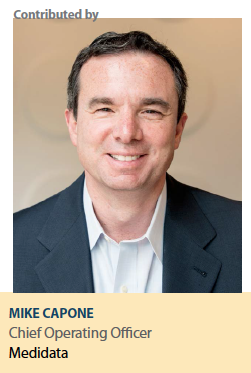 Rapid advances in technology are fundamentally changing the role of the data manager. Don’t worry: robots aren’t taking over. But, cloud computing is transforming the way we conduct clinical trials, and massive computing power is enabling analytics and machine learning to become a more integral part of data management.
Rapid advances in technology are fundamentally changing the role of the data manager. Don’t worry: robots aren’t taking over. But, cloud computing is transforming the way we conduct clinical trials, and massive computing power is enabling analytics and machine learning to become a more integral part of data management.
At its core, cloud computing enables advanced machine learning that can replace mundane and error-prone practices of traditional data management. For example, the International Council for Harmonization (ICH) recently amended its GCP guidelines to encourage companies to embrace risk-based monitoring (RBM). Why? Because ICH highlighted the industry’s misguided focus on the “completeness and accuracy of every piece of data at the expense of critical aspects (e.g., carefully managing risks to the integrity of key outcome data)."
It’s no surprise then that the FDA, EMA, and other agencies represented at ICH are following suit and encouraging new approaches to clinical data management. New technology enables a change in mindset toward processes like RBM and ripples down to the daily tasks of data managers.
The Benefits of Cloud Computing
Cloud computing gives monitors real-time access to trial data.This offers new opportunities to course correct, from identifying underperforming sites to flagging potential data quality issues. Additionally, cloud computing enables data aggregation across trials and sponsors. This data — anonymized and aggregated — can be used to create benchmarks so data managers can see how their trial matches up against others in the same therapeutic area.
Data capture as we know it is receding in the rear-view mirror. The first generation of eSource solutions merely replicated processes that were traditionally done on paper. These tools did little to solve swivel chair interoperability — the cumbersome process of double data entry into EHR and EDC systems. Sponsors are no longer adopting cloud solutions while keeping traditional methods; they are adopting new methods supported by cloud computing solutions.
This mindset shift is happening at pharma’s highest levels. We’re seeing new chief information officers at pharma companies who come from outside the industry. Rather than sticking with what’s worked (or not worked) in the past, pharma companies are bringing in CIOs from banking, automotive and other industries that have made big leaps in process efficiency by adopting new technology.
In a recent meeting with a large biotech partner, an executive noted that more than 60% of the company’s R&D pipeline was external.
Prior to inking an enterprise technology deal, this company used 38 disparate, non-integrated systems for data management! After assessing its clinical development footprint, the biotech company made the decision that a standardized solution would improve efficiencies across the organization.
In another example, a large pharma executive recently shared with us the company’s digital health priorities. This executive is tasked with building the company’s analytics strategy. We’ve heard similar priorities across the industry, so they are worth sharing:
1. Pick winners early. Use data and advanced analytics to test genomics and biomarkers to stratify patients for a higher response rate.
2. Accelerate clinical trials. Known as the holy grail of clinical research, use benchmark data for better protocols and to find the right sites and patients.
3. Advance prospective data. Develop capabilities to collect and integrate external data (such as consumer data) to demonstrate product value for payers.
4. Connect with patients. Ingest data directly from patients to better understand their experience and reduce burden to improve patient engagement and compliance.
Notice that these examples show technology alone doesn’t change anything; it’s about changing stakeholder behavior. Data management platforms bring these people together — investigator sites, sponsors, clinical research associates, patients — to encourage new behavior and ultimately get better performing clinical trials. Cloud computing accelerates that change.
A New World of Analytics
As mentioned above, the cloud computing era opens a new world of analytical tools to gain new insights. Such tools offer new capabilities for insight within existing data pools — machine learning solutions that provide an objective view of data quality, benchmark diagnostics that assess site performance on historical metrics, and even historical control arms to reuse clinical data to inform future studies.
These analytical tools are made possible by well-constructed data pools. It’s impossible to benchmark data or develop data quality algorithms without excellent master data management — and data standardization and harmonization — across sponsors, CROs, and sites. We conduct clinical trials to get enough data. And the only way to benefit from adopting new analytical tools? Ensure that data fits within them.
So yes, data management is changing. And that’s incredibly exciting for all who stand to benefit from clinical development. (PV)
Medidata is the leading global provider of cloud-based technology and data analytics for clinical research, helping to advance the scientific goals of over 850 life sciences customers worldwide.
For more information, visit mdsol.com.


















